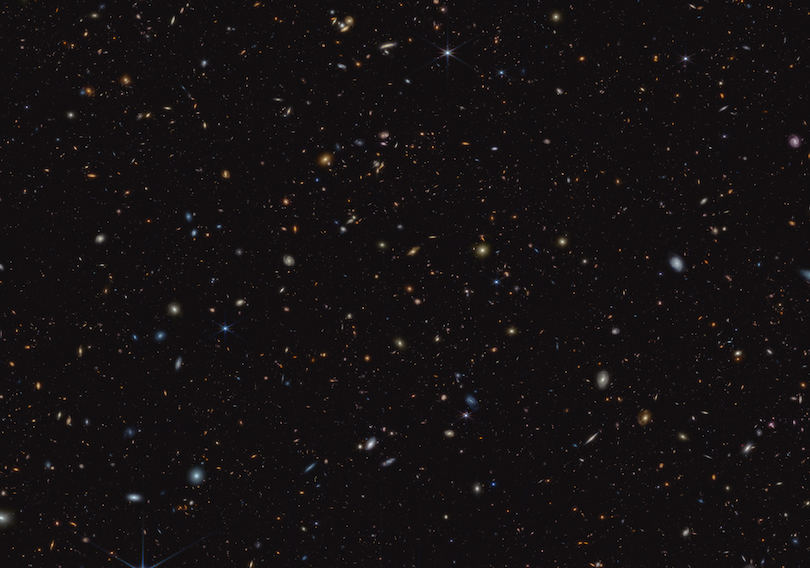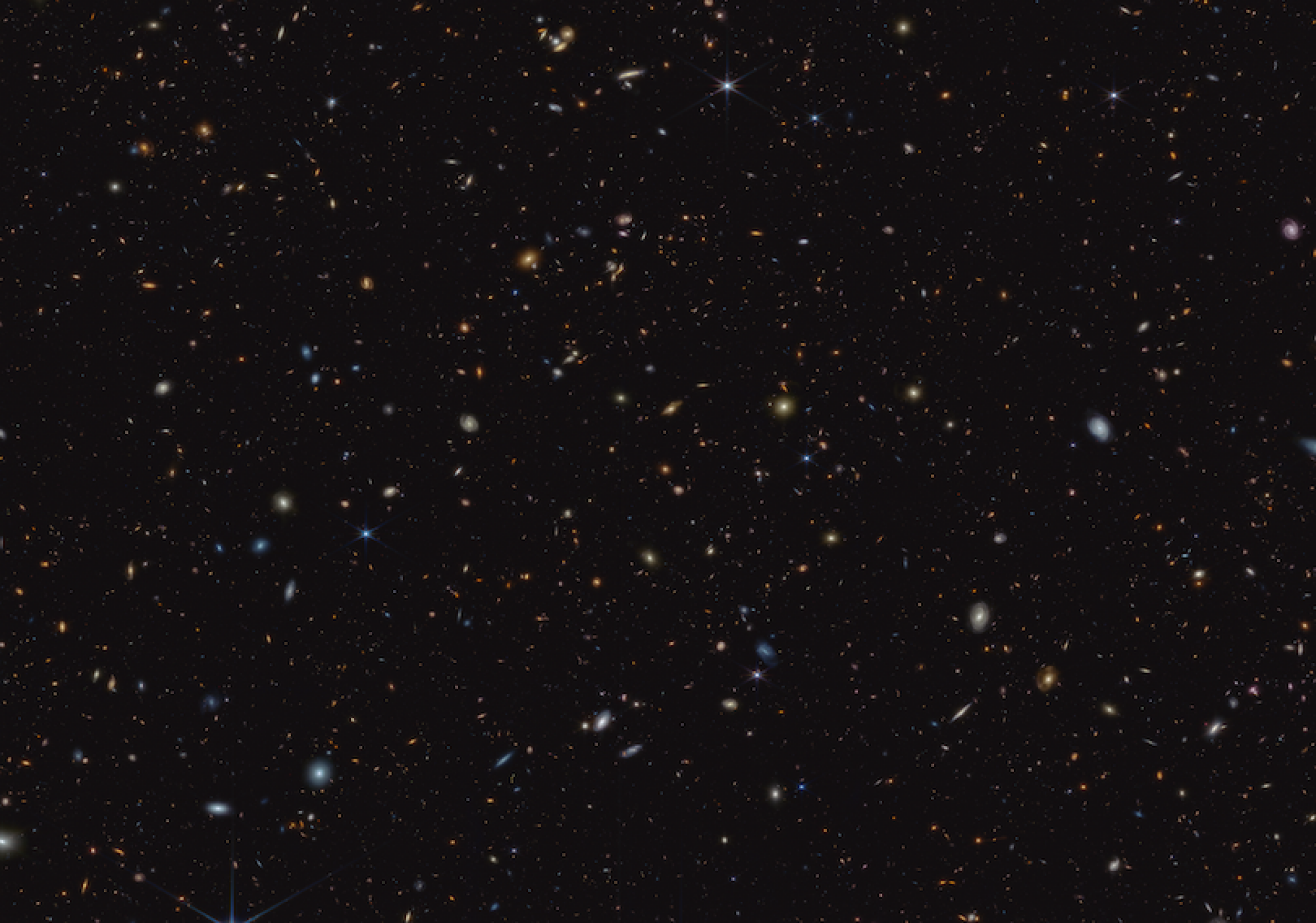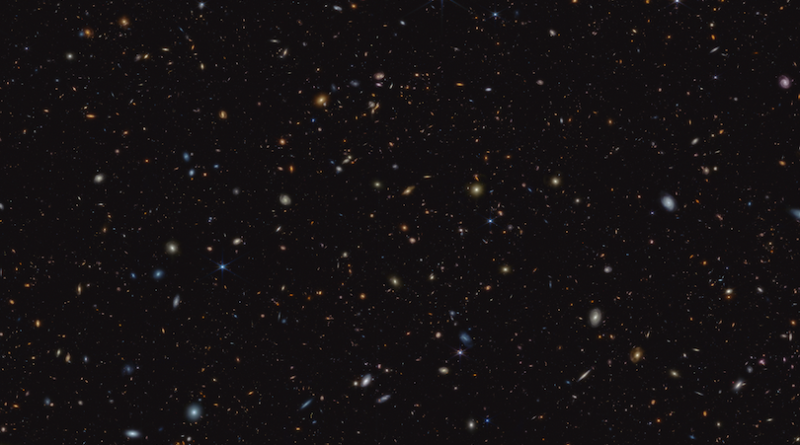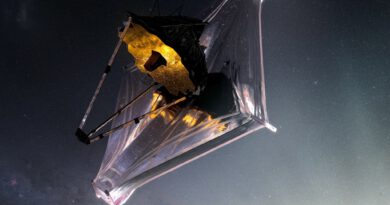Stunning Webb photo shows a truly unbelievable number of galaxies

Pretty much everything you see in this image is a galaxy — an entire galaxy brimming with stars.
Astronomers recently trained the profoundly powerful James Webb Space Telescope at a small section of the sky, endeavoring to find some of the universe’s most ancient objects. Just this single image, shown above and below, encompasses tens of thousands of galaxies.
“You’re looking at 45,000+ galaxies,” NASA tweeted.
In this deep cosmic view, you can see spiral galaxies, similar to our Milky Way. And the Webb telescope, which collects bounties of light and peers through thick clouds of space dust with its specialized infrared cameras, also reveals ancient galaxies that once just appeared like faint blemishes.
“You’re looking at 45,000+ galaxies.”
“Previously, the earliest galaxies we could see just looked like little smudges. And yet those smudges represent millions or even billions of stars at the beginning of the universe,” Kevin Hainline, an astronomer at the University of Arizona, said in a NASA statement. “Now, we can see that some of them are actually extended objects with visible structure. We can see groupings of stars being born only a few hundred million years after the beginning of time.”
Before the Webb telescope, which reached its solar system outpost about 1 million miles from Earth in early 2022, scientists had only found a few dozen galaxies younger than some 650 million years old. Now, through the Webb telescope’s Advanced Deep Extragalactic Survey, or JADES, they’ve almost found a thousand.
Astronomers also peered at another population of stars born some 500 to 850 million years after the universe’s Big Bang event. Those early galaxies, it turns out, were vigorous star factories.
“These early galaxies were very good at creating hot, massive stars,” Ryan Endsley, an astronomer at the University of Texas at Austin, said in a statement.

The Webb telescope’s powerful abilities
The Webb telescope — a scientific collaboration between NASA, the ESA, and the Canadian Space Agency — is designed to peer into the deepest cosmos and reveal unprecedented insights about the early universe. But it’s also peering at intriguing planets in our galaxy, and even the planets in our solar system.
Want more science and tech news delivered straight to your inbox? Sign up for Mashable’s Light Speed newsletter today.
Here’s how Webb is achieving unparalleled things, and likely will for decades:
-
Giant mirror: Webb’s mirror, which captures light, is over 21 feet across. That’s over two and a half times larger than the Hubble Space Telescope’s mirror. Capturing more light allows Webb to see more distant, ancient objects. As described above, the telescope is peering at stars and galaxies that formed over 13 billion years ago, just a few hundred million years after the Big Bang.
“We’re going to see the very first stars and galaxies that ever formed,” Jean Creighton, an astronomer and the director of the Manfred Olson Planetarium at the University of Wisconsin–Milwaukee, told Mashable in 2021.
-
Infrared view: Unlike Hubble, which largely views light that’s visible to us, Webb is primarily an infrared telescope, meaning it views light in the infrared spectrum. This allows us to see far more of the universe. Infrared has longer wavelengths than visible light, so the light waves more efficiently slip through cosmic clouds; the light doesn’t as often collide with and get scattered by these densely packed particles. Ultimately, Webb’s infrared eyesight can penetrate places Hubble can’t.
“It lifts the veil,” said Creighton.
-
Peering into distant exoplanets: The Webb telescope carries specialized equipment called spectrometers that will revolutionize our understanding of these far-off worlds. The instruments can decipher what molecules (such as water, carbon dioxide, and methane) exist in the atmospheres of distant exoplanets — be it gas giants or smaller rocky worlds. Webb will look at exoplanets in the Milky Way galaxy. Who knows what we’ll find.
“We might learn things we never thought about,” Mercedes López-Morales, an exoplanet researcher and astrophysicist at the Center for Astrophysics-Harvard & Smithsonian, told Mashable in 2021.
Already, astronomers have successfully found intriguing chemical reactions on a planet 700 light-years away, and the observatory has started looking at one of the most anticipated places in the cosmos: the rocky, Earth-sized planets of the TRAPPIST solar system.

